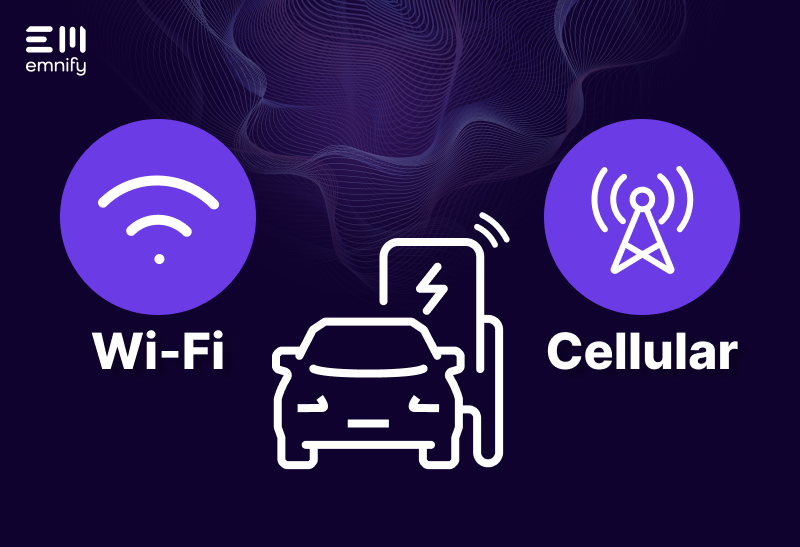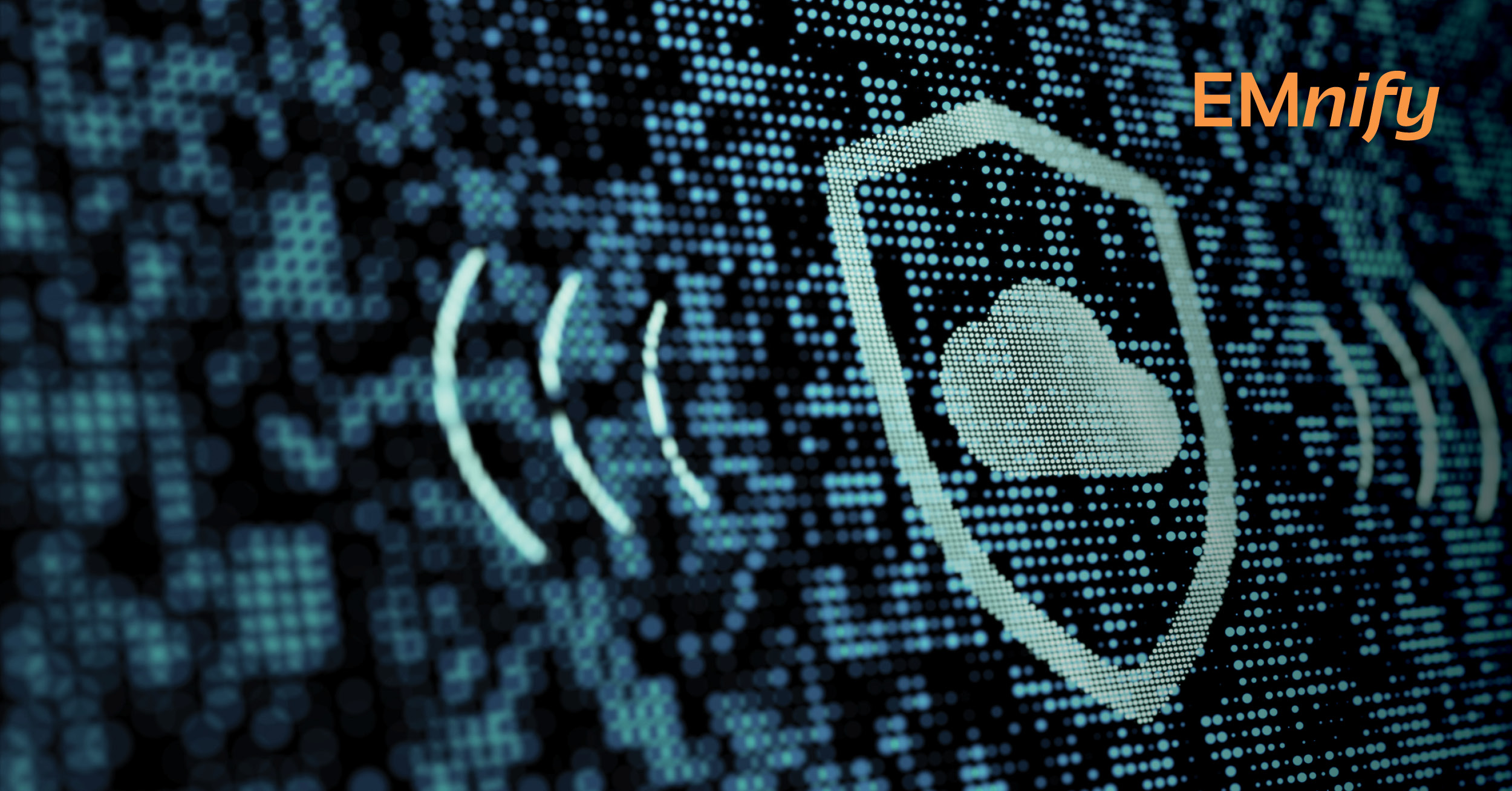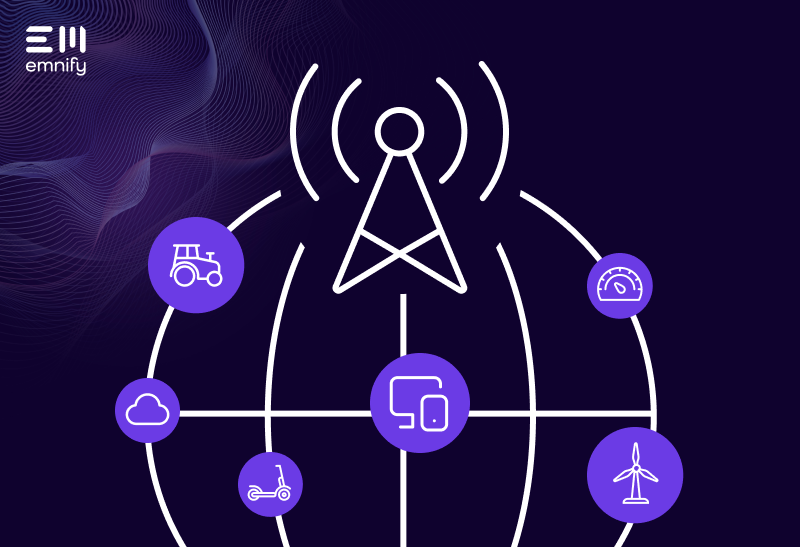

When it comes to EV charging stations, choosing the right connectivity—whether cellular or Wi-Fi—means you need to consider factors like reliability, security, location, and ease of deployment.
Let’s look at each of these in turn to help you decide which option best fits the needs of your EV charging deployment.
1. Communication reliability
Reliable, uninterrupted data communication is necessary for any EV charging installation. Data exchange between the end user, charger, and utility company summarizes each charging session, including details such as duration, cost, and transaction completion.
Reliable connectivity plays an important role in keeping charge point prices up-to-date, displaying real-time station availability on apps, and facilitating off-peak charging schedules, particularly for home chargers. It also supports remote troubleshooting to quickly resolve issues and supports regular software and firmware updates, which help keep chargers secure and fully functional.
Wi-Fi connectivity for EV chargers
Wi-Fi-connected chargers rely on the quality of the local networks. Public or private Wi-Fi can experience fluctuating performance, impacted by network traffic or subpar router hardware.
EV chargers need to be within the effective range of the Wi-Fi router to maintain a strong connection. This is okay for stations within the coverage area, but it also introduces a limitation that can lead to coverage gaps and reliability issues, sometimes requiring signal boosters or repeaters—especially as charging networks expand to larger areas or less equipped spaces, like underground or remote parking locations.
To overcome these limitations, some EV stations are now designed to operate as part of a Wi-Fi mesh network, which extends coverage across larger or more challenging locations.
Operating on the unlicensed 2.4GHz and 5GHz bands, Wi-Fi is prone to congestion and interference, especially when multiple devices compete for bandwidth. In some cases, too many devices attempting to connect to a wireless access point or cellular booster may result in unstable connections for some or all devices.
While Wi-Fi can be a viable solution in controlled environments where a dedicated network is set up specifically for EV charging, it often becomes tricky in less controlled, high-traffic environments. In such cases, cellular typically offers a more straightforward, reliable connection with fewer operational hassles.
Cellular connectivity: Extended range and high reliability
With a well-established global network infrastructure, cellular connectivity offers a strong option for commercial EV charging, especially if you’re planning to expand across multiple sites.
One key advantage is the ability to manage the connectivity of an entire network of chargers through a single platform. This approach means you can oversee and maintain devices across multiple locations, which bypasses the limitations of local Wi-Fi networks, offering a scalable and dependable solution that simplifies network-wide operations for EV charging deployments.
Cellular networks operate on licensed spectrum bands, which are much less susceptible to interference compared to Wi-Fi’s unlicensed bands. Licensed bands are regulated and assigned exclusively to specific operators, significantly reducing interference from other devices and networks. This controlled setup ensures reliable connectivity for chargers, even in remote or off-grid areas, without the need for local network infrastructure.
Compared to standard LTE, LTE-M and NB-IoT can deliver superior range and performance in challenging spots like underground garages or rural areas. These technologies offer extended coverage and stronger signal penetration, and when paired with multi-network SIM cards, chargers can connect across multiple networks for added redundancy.
They also support low power consumption, a key advantage for remote or solar-powered stations. For instance, solar-powered chargers in remote or outdoor areas, where power supply might be inconsistent, benefit from low-energy connectivity options. The energy efficiency of these radio access types (LTE-M and NB-IoT) reduces the load on solar power resources, allowing the chargers to operate for longer periods between maintenance visits.
Altogether, cellular connectivity provides a dependable solution that keeps EV chargers online, improves user experience, and improves revenue potential by minimizing downtime.
2. Security: Protecting EV charging data and hardware
EV chargers are increasingly targeted by security threats, with vulnerabilities impacting both the charging hardware and the sensitive data it transmits. An EV charger with secure data transmission mitigates the risk of any long-term security issues that could affect revenue and brand perception.
Wi-Fi security challenges
While Wi-Fi is convenient and often cost-effective, it introduces potential two-way security risks for EV chargers. A charger connected to Wi-Fi can become an entry point for unauthorized access to sensitive information on the host network.
This risk is not hypothetical.
For example, one EV charger in Indiana was hacked to display unauthorized messages on its screen—a seemingly benign incident, but indicative of how easy it is to breach these systems.
Ken Munro, co-founder of security research firm Pen Test Partners, cautions that vulnerabilities in EV chargers could allow hackers to control numerous units simultaneously. If thousands or even millions of chargers were switched on or off at once by a hacker, it could destabilize the power grid, potentially causing widespread outages.
While the WPA3 protocol offers improvements with stronger encryption and resistance to attacks, it does not fully address security needs in public or semi-public charging setups, where there’s a broader attack surface and less control over network access.
Cellular connectivity: A more secure solution
By contrast, cellular connectivity provides a more isolated, secure communication channel for EV chargers. Operating independently of local Wi-Fi, cellular-connected chargers avoid potential vulnerabilities linked to shared network infrastructure.
Cellular IoT solutions enhance security further by employing private IP addressing and end-to-end data encryption via virtual private networks (VPNs). This secure setup aligns with stringent industry standards, such as the Open Charge Point Protocol (OCPP), giving you peace of mind that data integrity and security are protected—especially in busy public or commercial locations.
For EV deployments, cellular connectivity minimizes attack points, ensuring that sensitive data remains protected. This offers you a reliable, safer option for handling EV charging data, helping to reinforce trust and reliability in an increasingly connected charging landscape.
3. Remote access and charger maintenance
To ensure consistent, optimal performance, EV chargers require routine maintenance, and remote access is key to achieving this cost-effectively. Through remote diagnostics, operators can assess and address issues without the need for on-site technician visits, saving both time and resources.
Wi-Fi limitations for remote access
Setting up remote access for Wi-Fi-connected chargers can be challenging. Wi-Fi remote sessions typically require the local network’s public IP to be reachable, which often means using static IPs or dynamic DNS services.
This setup increases security risks by making the network visible and accessible from the internet, thereby exposing it to potential external threats.
Additionally, enabling remote access over Wi-Fi requires configuring the router with adjustments like firewall changes and port forwarding, a process that can be complex and may require user or network engineer consent. These requirements make remote access cumbersome and may lead to security and operational complications, especially in large-scale deployments.
Cellular connectivity: Simplified, secure remote access
With cellular connectivity, EV chargers bypass these challenges by using IoT SIM cards with static, private IP addresses, creating a secure, dedicated VPN for remote access. This setup isolates the charger from the local Wi-Fi network and minimizes exposure to external threats.
Fixed private IPs remove the need for additional applications, such as dynamic DNS or port forwarding, to manage continually changing IP addresses, which are common with Wi-Fi networks.
This streamlined remote access capability means you can perform diagnostics, firmware updates, and even configuration changes remotely and securely, supporting a more consistent and cost-effective maintenance cycle that ensures chargers perform reliably over time.
4. Ease of deployment
Cellular connectivity offers a simplified setup process for EV charging deployments, addressing many of the challenges associated with Wi-Fi networks.
Cellular-enabled chargers connect directly to the network upon installation, removing the need for local SSID configuration, routers, or access points—an advantage that’s especially useful in remote or public sites without existing infrastructure.
This approach also reduces dependence on third-party network providers; with cellular connectivity, you can bypass the complexities of negotiating network access, configuring firewalls, or securing permissions required by Wi-Fi networks, all of which often add delays and administrative hurdles.
Additionally, cellular chargers are easy to scale across multiple locations since SIM cards can be activated and managed remotely, enabling rapid expansion with consistent connectivity across all sites.
Conclusion
Choosing the best option will really depend on the specific needs of your deployment. Wi-Fi, while cost-effective in stable environments, often falls short in reliability, security, and ease of remote management. It also requires more complex setups and is heavily reliant on local infrastructure.
Cellular connectivity, however, provides a more resilient solution, ensuring continuous communication, enhanced security, and straightforward deployment.
With benefits like remote diagnostics, easy network scaling, and dependable performance in both urban and remote areas, cellular connectivity stands out as a scalable, secure, and operationally efficient choice for building and managing EV charging networks.
Get in touch with our IoT experts
Discover how emnify can help you grow your business and talk to one of our IoT consultants today!

Jakub Boote is a product marketing specialist dedicated to bringing products and features to life by clearly articulating their value in solving real customer challenges and achieving key jobs to be done.


